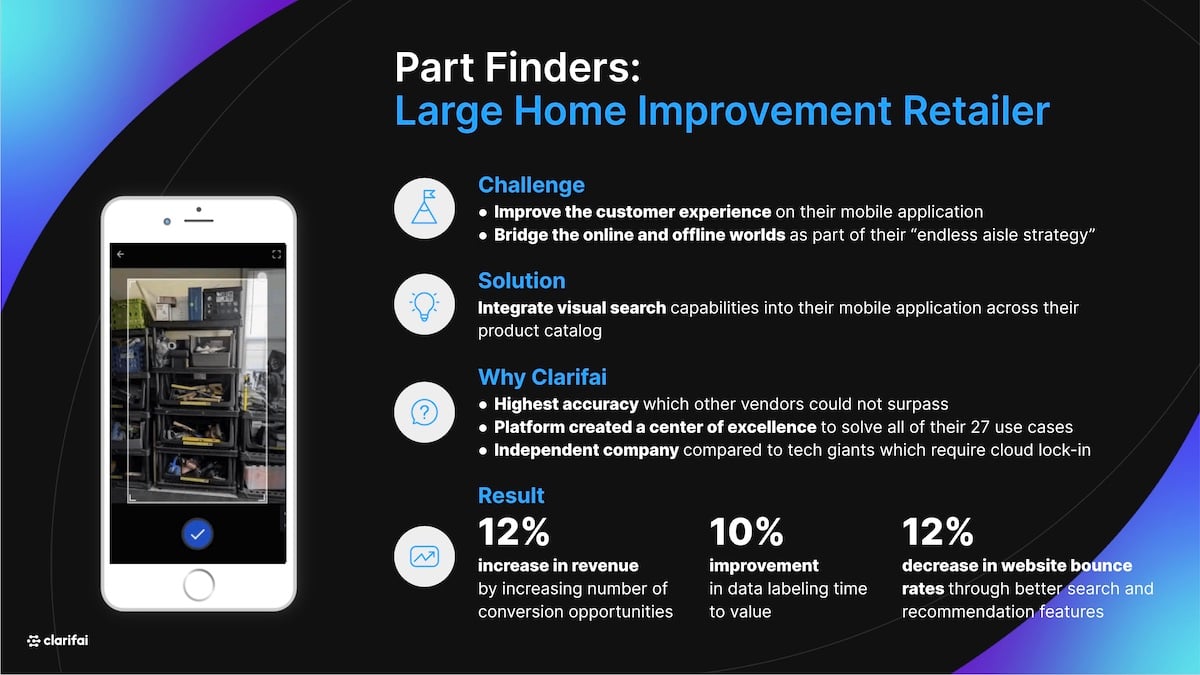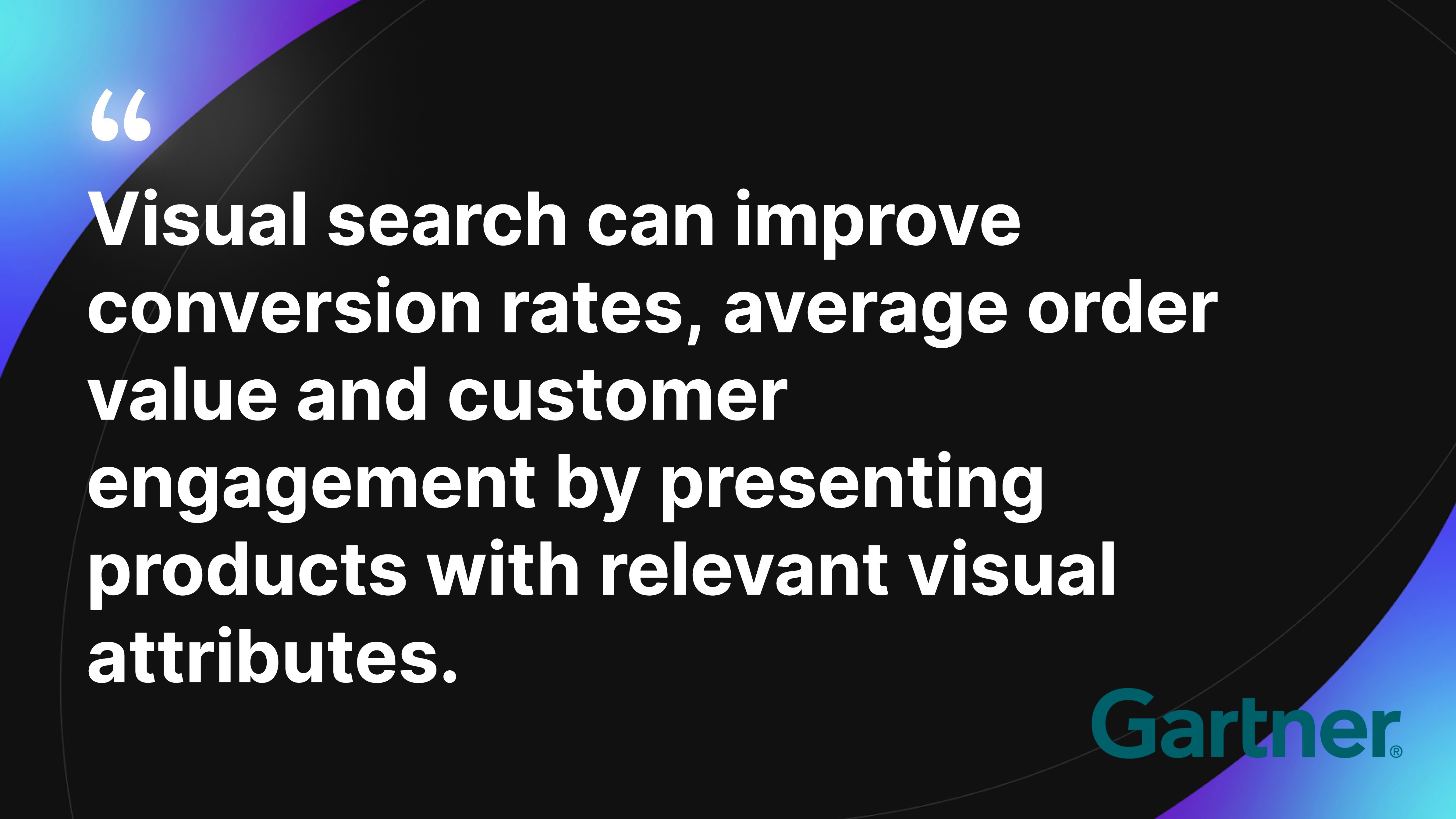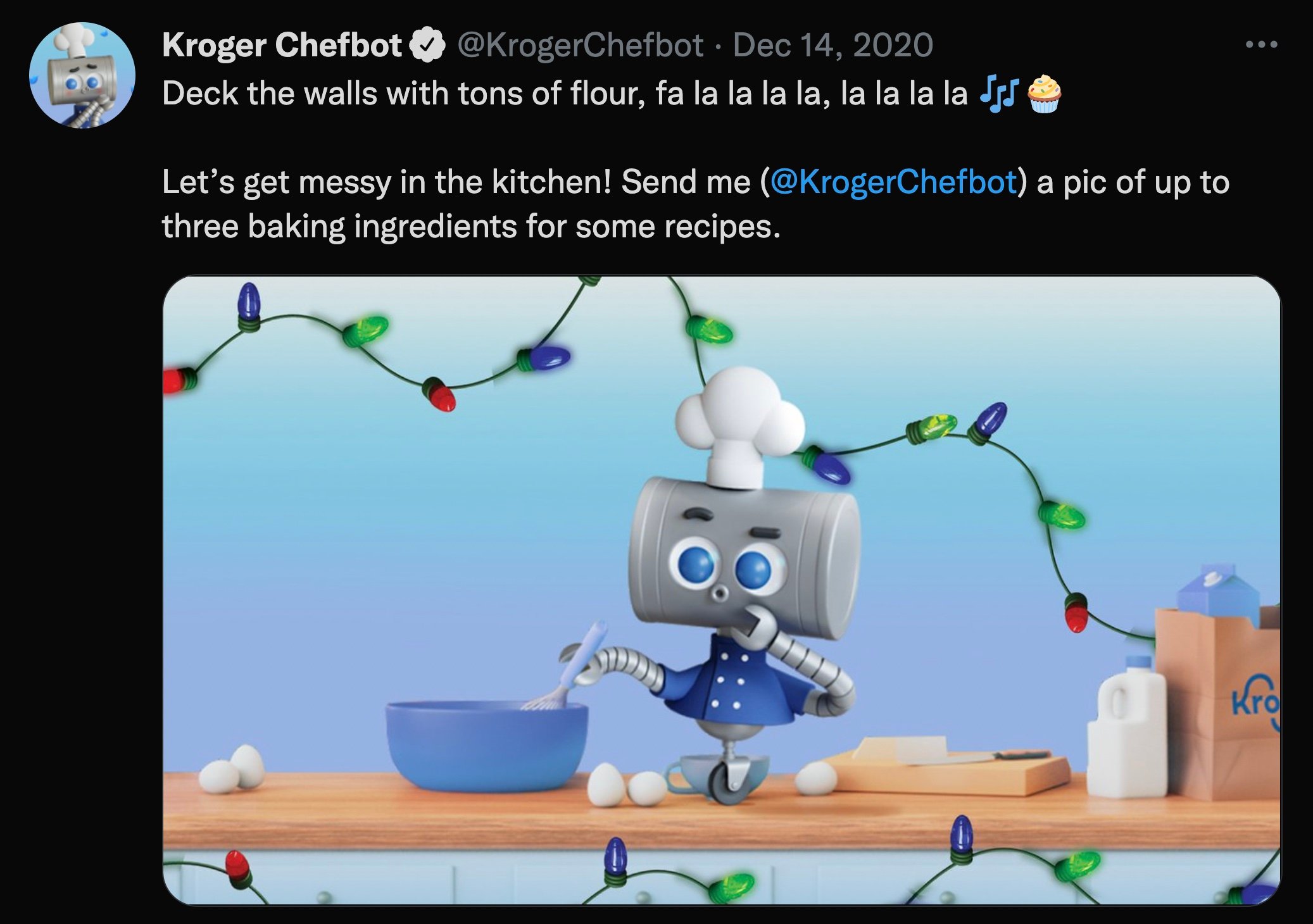It’s a Friday night, the week’s over, and you’re curled up on the couch watching your favorite episode of “Haunted Golf Courses” when you notice that one of the characters is wearing a shirt you just really, really like. Without missing a beat or even pausing the show, you lift up your phone, snap a quick photo, and within seconds that same shirt’s product page is on your phone. You see that the price is reasonable, and you really just want to grab it and return to watching your strange, niche TV show. You click “buy,” select 2-day shipping, and return to watching the ghosts inhabiting the 4th hole at Boulder Creek. Shopping had been the last thing on your mind, and yet you just bought a product identified only by an image on another screen.
This is product discovery powered by visual search, and it’s opening a whole new way for retail to make sales in otherwise unlikely situations.
Visual search typically starts with a person pointing their mobile phone’s camera at a specific object in the real world. It then uses image processing and machine learning to find relevant search results without any text involved. Visual search is constantly improving as a result of AI technology and allows users to discover new products without even knowing what they are looking for.

Why Visual Search?
Text-based search engines have been around since the beginning of the web, but they always have required you to know what you're looking for – specifically, you have to know the words for the product that you're looking for. Text search assumes that your customer already knows what they're looking for and what it's called. When a customer can’t put into words what they’re looking for, they won’t be making any purchases. The onus shouldn’t be on the customer to have the knowledge to buy from you from only well-defined established categories.
What is especially powerful about visual search is that rather than sifting through countless results that are not quite what they’re looking for, customers are presented with the closest match that is actually available for sale. Furthermore, customers are increasingly expecting a multichannel shopping experience, visual search caters to consumers’ desire to move effortlessly between the online and offline worlds.
In the above video, the customer sees a backpack. Customer likes, customer has a cell phone on them and snaps a quick picture. Instantly, they’re able to identify that backpack by name and find it in a product catalog. There is an immense range a lot of different backpack products and sizes, and finding the specific words to describe which backpack that is would be extremely unlikely without specific previous knowledge.
Changing Times Are Driving Innovation

COVID-19 isn’t completely responsible for changes in the market and user behavior, but it has massively accelerated the transition. Companies are seeing an intense need to go digital and make their systems extremely simple to use. Businesses need to improve conversion rates, average order value, and customer engagement, and presenting visually similar and complementary products improves conversion.

In the future, visual search can also progress from simply identifying items to being able to work as a recommendation engine as well. Instead of simply being able to search for specific items seen and liked, customers will be able to “search” their living room for the perfect coffee table to match the couch, visualize them in place, and purchase them directly. Eventually, due to ML’s capability to understand individual tastes, visual search will even detect spaces in customer homes that can be filled with individualized items. For consumers, this could make shopping easier and more fun, helping your customers fall in love with shopping again.
How could this be used in stores?
Visual search starts with uploading an image. Naturally, this will be happening from cellphones the majority of the time when used by consumers. However, there are a wide variety of cameras out there in the world and special.
In-store product part finders, which currently work by scanning barcodes, are a natural use case of visual search. As well, point-of-sale terminals could use it to look up the prices and identities of items missing tags, significantly speeding up the checkout process.
In the backroom, warehouse management systems could be improved. Any time anybody has a use case where need to sort through a large amount of visual data, perhaps involving a box of different parts, they could be using visual search as a solution.
How Visual Search Engines Impact Sales
A key aspect is the combination of “offline” with the online when it comes to the shopping process. Visual search allows customers to check out literally anything they stumble upon by walking the streets, visiting a country, or as previously mentioned, watching TV. They can use their immediate sentiment and move on to searching for a product to buy.
All in all, brands that are better optimized for visual search will remain ahead of competitors.
Use Case: Kroger Chefbot
CHALLENGE:
The Kroger Company, the largest supermarket chain in the US, wanted to reduce food waste by providing mealtime inspiration and personalized recommendations based on the food already in a user’s fridge.
SOLUTION:
Chefbot AI analyzes photographs of over 2,000 ingredients, unlocking 20,000 Kroger recipes for users to cook.
How Chefbot Works
- Snap: Users snap a photo of three ingredients from their refrigerator or pantry
- Tweet: Users tweet their photo to @KrogerChefbot. Through artificial intelligence, Chefbot identifies ingredients and then scans thousands of unique recipes on Kroger.com
- Cook: Within seconds, Chefbot responds to the user's original tweet to deliver a list of personalized recipe recommendations based on the selected ingredients

The Takeaway
Visual search is here to help your customers find new ideas, discover unique products, and get the best value. It can be used for fun projects to help sustainability like the Kroger Chefbot, or it can be used as a tool to connect your customers instantly with the products they want when they don't even know their names.
It's suitable from large retailers, marketplace, and well-known brands, to local stores and new direct-to-consumer companies, and it's here to stay.







